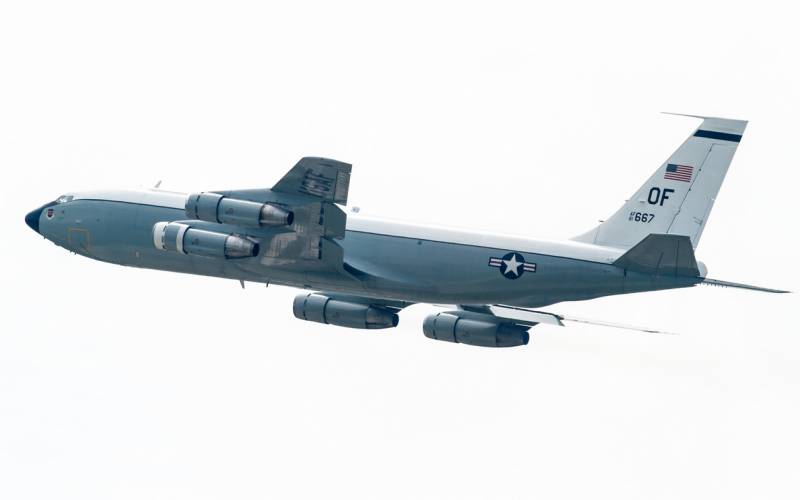American "nuclear reconnaissance" WC-135 made two flights with an unclear mission
The U.S. Air Force's Boeing WC-135 Constant Phoenix reconnaissance aircraft is officially deployed on an atmospheric sampling mission to detect and identify nuclear explosions around the world, and each of its deployments has attracted particular attention. Currently, the US Air Force has two aircraft of this modification, nicknamed "nuclear bloodhounds", they are part of the reconnaissance squadron at Offutt Air Force Base in Nebraska. With the ability to refuel in flight, they are capable of being used in different parts of the world.
In January, one of the WC-135s was temporarily based in Puerto Rico. From there, he made two long 15-hour flights over the South American continent: first over the Atlantic coast, along the whole of Brazil, and 10 days later - over the Pacific Ocean, all the way to the coast of Chile.
Detection of particles and explosion traces in the event of nuclear testing is highly unlikely in Latin America and the Caribbean. Therefore, WC-135's actions suggest something else. With regard to flights to South America, they are not the first time. It also flies over the Caribbean in 2019, especially off the coast of Venezuela. The operation was carried out at a time when the United States increased pressure on the head of this country, Nicolas Maduro.
- indicates the Chilean website Aero-Naves, and emphasizes that his recent flights along South America, in which various reconnaissance equipment could be used, "do not cease to arouse suspicion in the countries he has flown over."
The publication draws attention: in Brazil, this happened immediately after protests and encroachments on power by extremist supporters of former President Jair Bolsonaro. In Peru, his January 27 flight also coincided with rising protests and a climate of violence following a recent coup attempt by former President Pedro Castillo.
The flights of this aircraft are repeated in those parts of the world where there are signs of nuclear tests, such as the vicinity of India, North Korea, or even sectors of the Russian Arctic. However, their flights across Latin America do not appear to be commonplace.
says Aero-Naves.
US Air Force explanations speak of "standard missions":
This was the first WC-135 sampling off the coast of South America in almost 30 years. Its purpose is to collect atmospheric air samples in different geographical areas in order to clarify the level of radiation under normal conditions.
Susan Romano, director of communications for the Air Force's Technical Applications Center, said in a statement.
She also mentioned "equipment calibration", although no evidence was provided that this was actually done, nor any explanation as to why this should be done on flights across the region. In addition, the last "parallel" route of the reconnaissance aircraft in Peru does not fit into this version.
Other details are also emerging - in particular, the statement of the commander of the US Southern Command, General Laura Richardson, who reported on Washington's talks on lithium in Argentina, Bolivia and Chile through her embassies. At the same time, it was said about the importance of "real knowledge of what is happening on the ground" in an area where "the United States has to face competitors." In this regard, the publication of Aero-Naves is limited to a vague hint:
Possible interest in or observation of certain “objects of Russian origin”, information about which the United States may require in connection with the current conflict in Ukraine, cannot be ruled out.
- US Air Force

Information